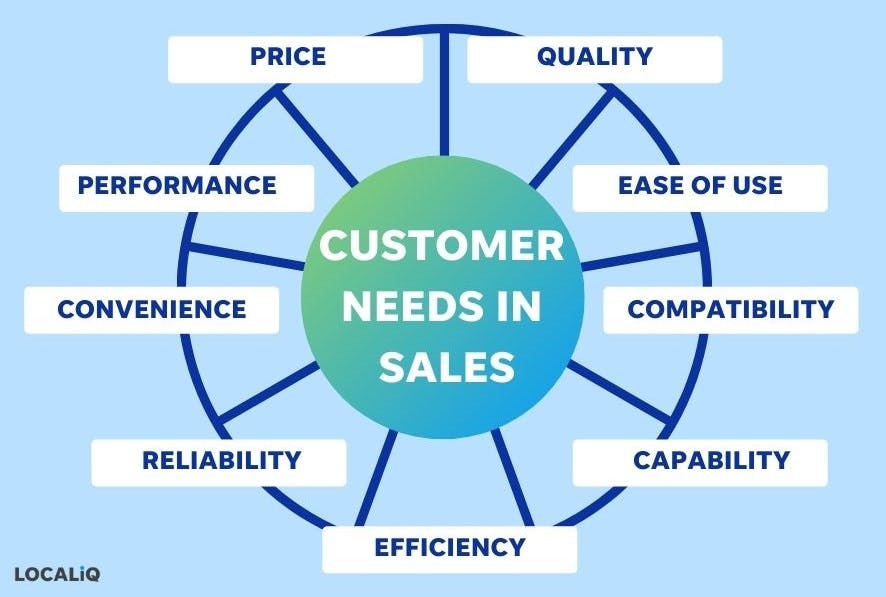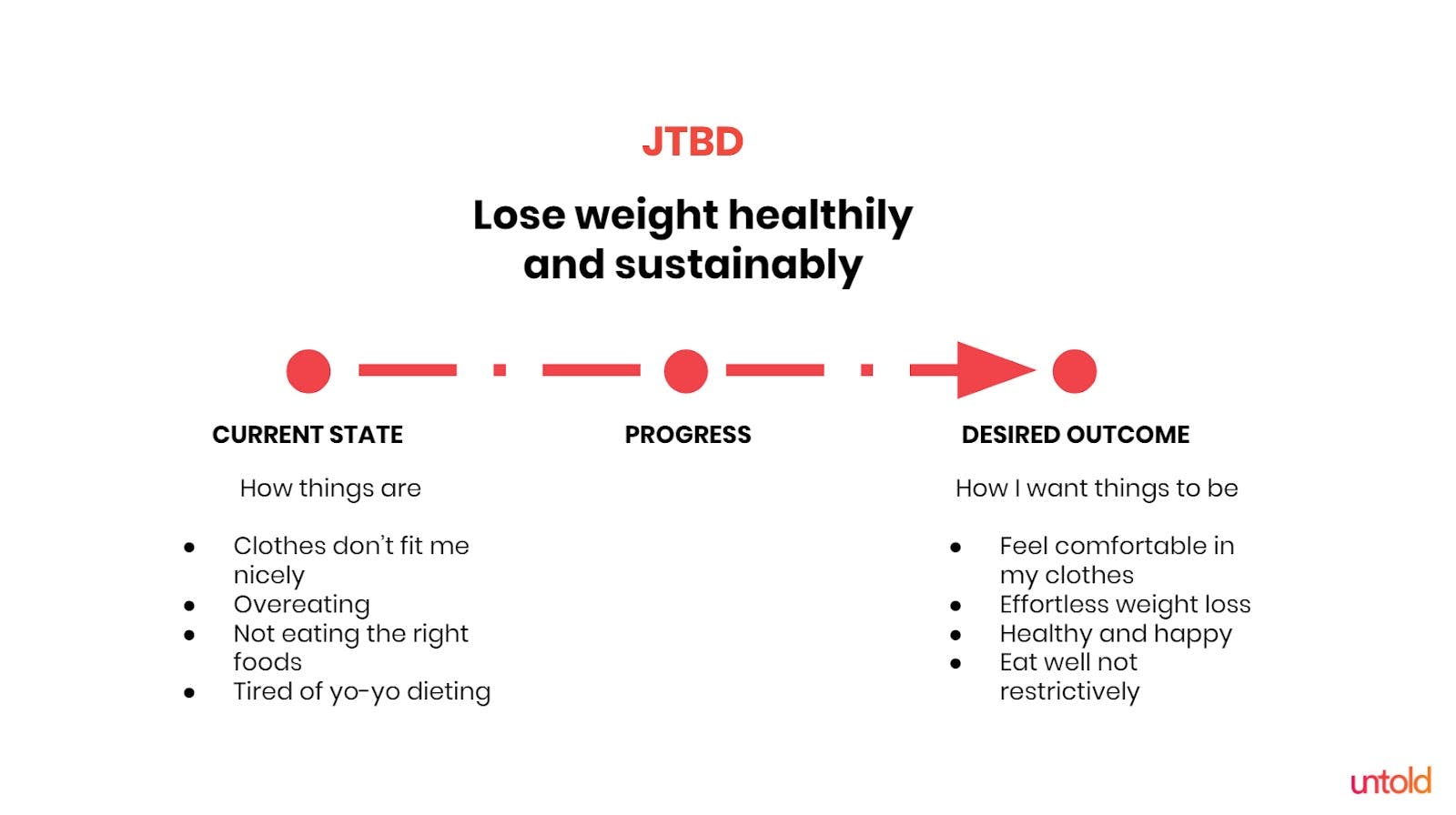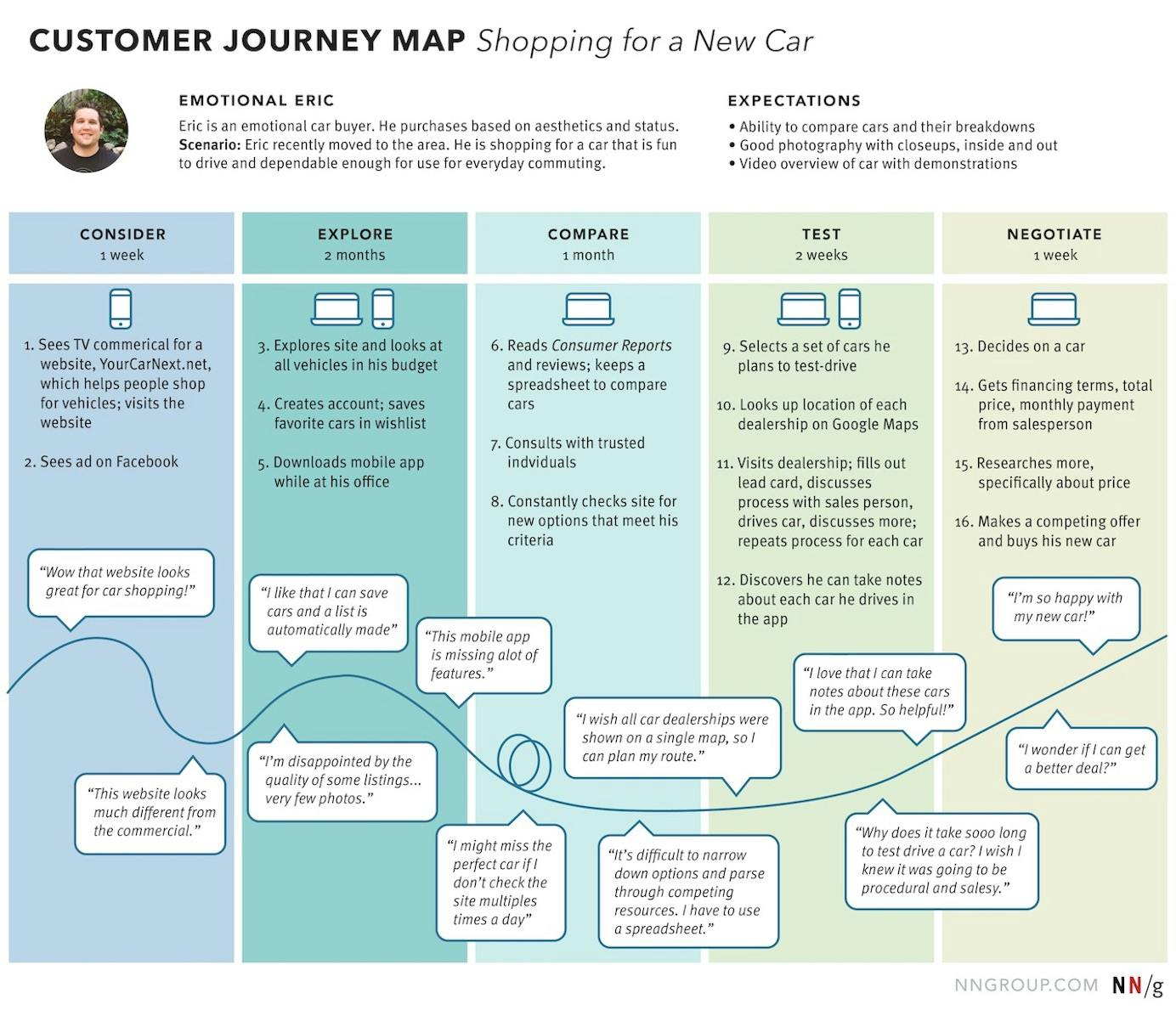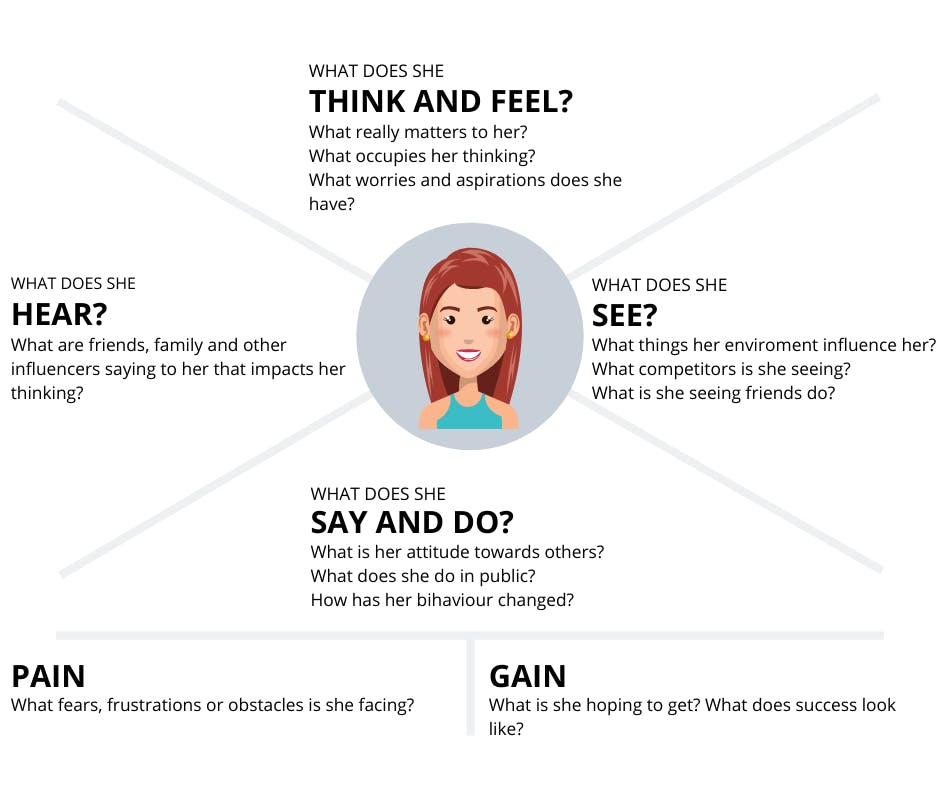Customer needs: how to identify and analyze them
Sep 6th, 2022

Contents
What are customer needs?
Types of customer needs
How to identify and analyze customer needs?
How to solve customer needs?
Customer needs are the primary driving factor for the economy and innovation. 89% of successful companies claim that growth depends on foreseeing customer needs and offering helpful experiences along the consumer journey. By conducting market research, businesses can reveal customer requirements, design product features that address these demands, and influence consumers’ buying decisions. Companies prioritizing customer needs have a better chance of connecting with clients and gaining their loyalty. In addition, organizations that put customers first are 60% more profitable than businesses that don’t.
No matter how great your product or service is, if people are not interested in it and do not believe they need it, they will not make a purchase. Thus, identifying customer needs is crucial for product marketing and product development as it helps tailor services to specific requirements, generate more sales and maintain consumer loyalty. Unless you clearly understand customers’ true needs, you won’t be able to convince consumers they should buy what you’re offering. Once you learn how to identify and analyze customer needs, you can sell products and services more effectively and outperform your competitors in the market.
What are customer needs?
Customer needs are motives that drive existing or potential consumers to purchase a product or service. The concept encompasses basic requirements like high quality and reasonable price, as well as more complex ones, such as alignment between consumers’ ethical principles and brand mission. The term also refers to the attributes of a good or service that encourage customers to buy it, such as design, convenience, or reliability.
Customers typically choose companies that satisfy the largest number of their needs. The needs can be explicit and hidden. Explicit needs are requirements that customers can express verbally. In contrast, hidden needs are issues and difficulties faced by customers that they have not recognized. These needs subconsciously influence consumers' buying decisions. To identify customer needs, companies can perform market research, conduct focus group discussions or collect consumer feedback.

There is also a non-standard approach to determining customer needs developed by Harvard Business School Professor Clayton Christensen. He created the Jobs to be Done theory which implies that consumers hire products to carry out certain tasks or jobs rather than simply buying them. The jobs to be done correspond to customer needs and are characterized as a situation-based description of understanding the competitive environment, consumers’ wants, concerns, and purchasing patterns. The concept shifts focus from the actual product to the goals people hope to achieve when they buy a product or service. When paying close attention to the jobs to be done, companies can spot new business opportunities and prevent risks.

Types of customer needs
Now we will discuss the most common types of customer needs that often influence consumers’ choices. Ben Motteram, a customer experience expert, distinguishes seven basic needs consumers experience when interacting with a company.
Friendliness
When people engage with a brand, they expect that the company treats them with courtesy and politeness. Thus, friendliness is the most important indicator of excellent customer service. It directly affects consumers’ perception of products and services and hence the number of sales and level of customer loyalty. 58% of U.S. consumers claim they are ready to pay more for outstanding customer service. Therefore, friendliness should be a top priority for any business, especially for companies that heavily rely on returning customers. This applies not only to the customer support team, sales representatives, and delivery workers but also to user interfaces. A user-friendly interface is intuitive and easy to navigate, which simplifies many processes for customers.
Empathy
Customers must be sure that business understands and appreciates their feelings. 49% of customers want to communicate with an empathetic customer support agent. To create an empathetic environment, a company should view things from a customer’s perspective. Businesses need to develop products that not only help users achieve their goals but also match their workflows and lifestyles. Besides listening to customers, empathetic culture applies the acquired knowledge in practice. Companies should anticipate customer needs and see their clients as human beings instead of viewing them as faceless users.
Transparency
Fairness and transparency are crucial to consumers as they need to feel that they get sufficient attention and know what they pay for without any surprises regarding the price. Therefore, businesses should develop a clear communication plan and take responsibility for the services they offer. Companies should inform consumers about changes in price or service issues. Honesty also concerns product ingredients, the actual size and fit of the product, and the network of suppliers. To maintain openness, brands must demonstrate visual content, encourage customers to leave reviews, provide ratings and respond to frequently asked questions.
Control
Consumers want to feel that their opinions matter. Building customers’ trust and loyalty will become easier if you give them a feeling of control over various interactions with your company. Customers can experience this feeling if they can easily return items, change terms of service or extend subscriptions. In addition, eCommerce companies can provide control by offering different delivery options, especially during holidays.
Options
If your goal is to increase customers’ interest in your company, it is crucial to provide multiple alternatives. Customers want to make choices concerning prices and types of payment methods available. For example, a business can offer several subscription plans or different customer support service channels. In addition, you need to ensure that customers can easily change previously selected options.
Information
When customers begin interacting with your brand, they need to know more about your products and services. Brands should provide useful information to make services more appealing to consumers. You need to develop a content strategy and educate customers by providing them with articles or videos. The best way to inform customers about your company is to start a blog with valuable content, create a knowledge base, and regularly communicate with customers by answering their questions and comments on social media.
Time
Businesses should treat customers’ time with respect, provide assistance and resolve consumers’ issues quickly. Companies need to make sure that every brand interaction takes as little time as possible. Furthermore, customer service should be efficient, which means that it requires minimum effort from both sides. This can be accomplished by automating processes, offering proactive support, routing requests to the appropriate team, and gathering customer feedback.

We have described the essential types of customer needs. In the next section, we will learn how to recognize and analyze what your buyers want.
How to identify and analyze customer needs?
With the help of the following steps, you will understand consumers’ desires and motivations and find ways to persuade customers to buy products and services.
Conduct market research
With market research, you can learn how to target existing and potential customers and develop a strong marketing strategy based on your audience, competition, and industry findings. It can also help you identify areas of your business that need improvement and opportunities for development. When performing market research, pay attention to the reliability of the source, the relevance of the study to your business, the size of the sample, and the timeliness of the information.
Conduct customer interviews, surveys, and focus groups to collect data and create detailed customer personas. Pay attention to the following key characteristics: age, gender, occupation, income, location, values, interests, and hobbies. Analyze what factors motivate consumers to buy products and services. For example, consider whether they make decisions based on social or emotional needs, work requirements, family needs, financial constraints, or brand preferences.
Consider spending habits
Your customers have different financial capacities, so you need to discover their buying habits, preferred shopping methods, and amounts of money they are willing to spend. Consider their average income and the percentage of the budget that they pay for the type of goods and services you offer. In addition to customers’ motivations, you must identify their preferred shopping methods. Explore whether they make impulsive or carefully considered purchasing decisions. Determine if they shop online, visit physical stores or use both methods.
Analyze your competitors
One of the easiest ways to understand the needs of your audience is to run competition research. Check your competitors’ websites and analyze users’ responses and complaints. Visit product review pages and read about the advantages and disadvantages of competitors’ offers. Use the findings to improve your products and services and highlight their strong points in promotional campaigns. For example, if you find that people frequently complain about the quality of competitors’ products or poor customer service, you can highlight these aspects in your communications to outperform rivals.
Review frequently asked questions and common problems
Use social media listening and monitor your accounts to check what customers say about your company online. You can either look at customers’ responses on your page or use social listening tools like Google Alerts. This tool allows performing detailed analysis and searching the mentions about your company all over the web instead of focusing solely on social media networks. You need to enter the brand name or any other term you want to learn more about. The results will help you find the areas that need improvement and identify wants and issues your product does not address.
Conduct customer satisfaction surveys
When running a survey, pay attention to the three crucial metrics: Customer Satisfaction (CSAT), Net Promoter Score (NPS), and Customer Effort Score (CES). The Customer Satisfaction metric is assessed through a score that requests customer feedback after making a purchase or interacting with a company. Respondents can also answer open-ended questions and explain why they gave a certain score.
Net Promoter Score measures customer loyalty to the company. The metric informs you whether the customers will recommend your products to family or friends. Depending on the score, customers fall into three groups: promoters, passives, and detractors. Promoters are customers who are loyal to the brand and will recommend it to other people. Passives are people who are likely to choose other brands if provided with a better option. Finally, detractors are respondents who will not buy your products again.
Customer Effort Score evaluates how easy it was for users to complete a specific action, such as returning a product or writing a message to customer support. In essence, you can send CES surveys after any customer’s interaction with your company to measure the effectiveness of the customer service team and improve their work.
Create a customer journey map
To understand customers’ needs, you should see things from their perspective. So you need to discover what consumers are searching for and what phase of the customer journey they are at. Then you can create a customer journey map which is the illustration of consumer interactions with your company. This will help you learn about existing and potential challenges customers face and understand how to improve their experience.

Categorize the data
At this stage, you have gathered customers’ feedback, analyzed it, and spotted the trends. Now you can divide the collected data into groups: pricing, features, quality, and customer experience. Then you should categorize the findings according to the main reasons why customers make purchases. These reasons can include features that motivate consumers to buy your product, benefits of these attributes for customers, and value or consequences of the purchase. Finally, you can visualize data for greater convenience, turn it into graphics and share it with your team.
Implement your findings
The last step of the consumer needs analysis is to implement the results into practice. Develop an action plan that contains a list of people responsible for achieving the objectives. Include key performance indicators, goals, outcomes, ideas, and suggestions for improvement. Then, regularly review the plan and track the progress with your team.
In the following section of the article, we will consider the most crucial strategies that you need to take into account when developing your action plan.
How to solve customer needs?
Here are several ways to meet customer needs and expectations for your business. These strategies will help you put yourself in customers’ shoes and earn their trust.
Provide top-notch customer service. Superb customer service is a key competitive differentiator and the most critical element of consumer loyalty. The process of communicating with your team should be easy and convenient for customers. In some cases, consumers require an immediate answer from the customer success team via phone or chat. Other issues are less urgent and can be handled later. Either way, the customer service department should treat clients with friendliness, openness, and empathy.
Create customer-focused corporate culture. Company culture significantly impacts the ways business interacts with consumers. To establish this culture, you must ensure that both management and staff focus on delivering a great customer experience and satisfying client needs. Moreover, you constantly need to highlight the value of gathering consumer feedback and involving customers in the company’s decision-making processes.

Demonstrate honesty and respect. People appreciate honesty, so you need to be open with the customers. Instead of hiding your mistakes, you can accept responsibility and explain how you can improve the situation. Honesty helps you build customer trust, strengthen the relationships with the audience and promote loyalty.
Offer consistent messaging. One of the best ways to implement a customer-centric culture is to maintain consistent communication across all company’s departments. Make sure that the employees understand the company’s objectives, values and mission. Each time before sharing content, review your website, social media, and other marketing channels to verify that the information is consistent and matches the updates. Organize onboarding for new employees, regular seminars and training for the staff to discuss significant initiatives and get everyone on the same page.
Involve the clients in the business development process. Ask customers to provide feedback and then use this information to make changes in your company and meet long-term and short-term client needs. In addition to the benefits for your business, you will demonstrate that you value customers’ opinions by incorporating their suggestions into your business plan.
To provide the best possible experience to your customers, try to exceed expectations and not only satisfy but even go beyond consumer needs. Make ongoing attempts to get better and improve products and services, and you will reach your business objectives and become the best company in your area from the clients’ perspective.
